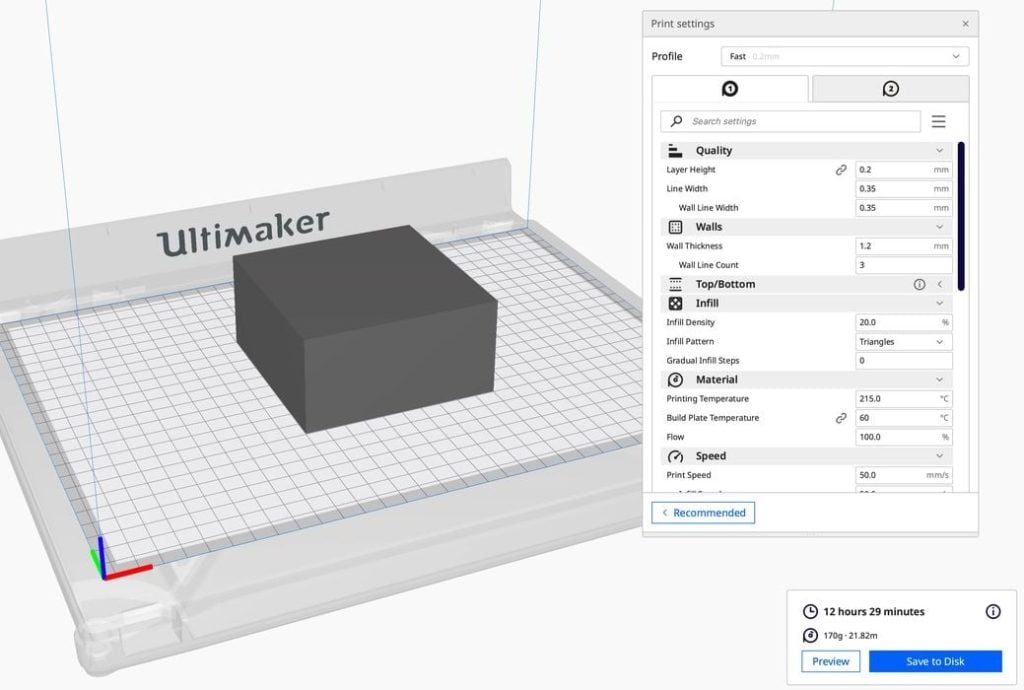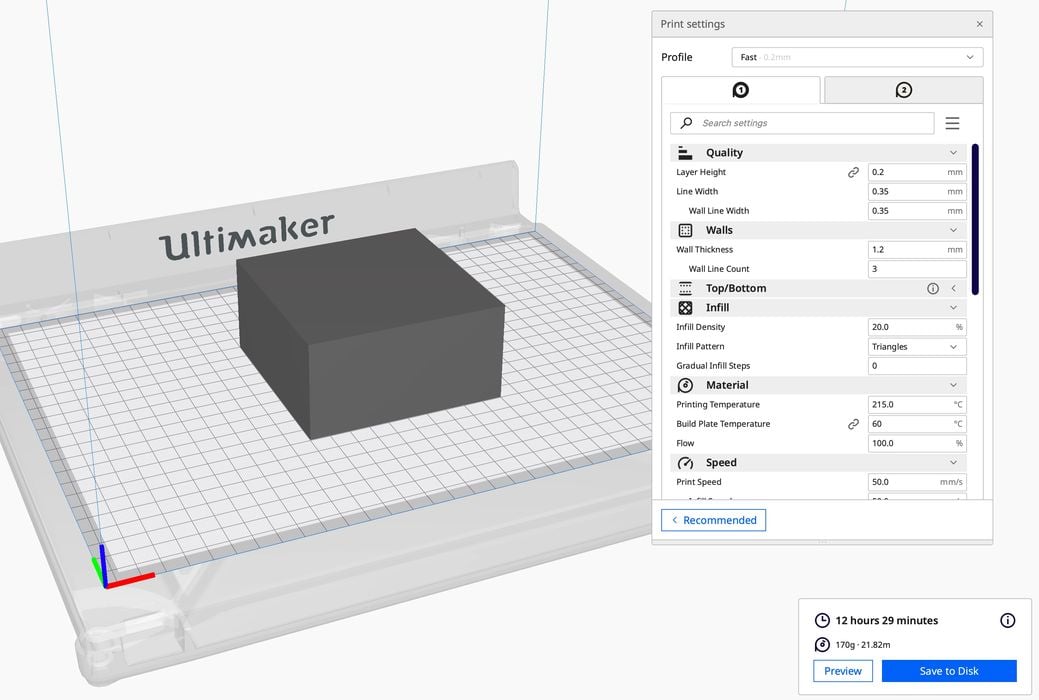
Ultimaker announced a new version of Ultimaker Cura, which seems to offer much more rapid 3D printing.
Ultimaker Cura is one of the most well-known 3D print preparation software tools, as many companies beyond Ultimaker have leveraged the software’s open source availability to be used for their own equipment. In addition, Ultimaker supports this activity by adding in profiles for countless devices directly into the software.
Indeed, the stock distribution of Ultimaker Cura’s most recent revision, 4.13.1, includes machine definitions for 124 equipment brands, and the number of supported models within those brands is far more than I want to count right now.
However, version 4.13.1 is notable for something far more interesting than mere printer definitions. This release is all about speed.
They’ve made two changes that could dramatically increase print speeds, without changing anything on the hardware.
The first deals with print resolution. They explain:
“Releasing a brand-new 0.3 layer height option for both the default and draft profiles. This allows you to print up to twice as fast without switching to a larger print core.”
This makes sense and is often used by those seeking faster prints at the cost of resolution. Trading a coarse surface for a faster print can work in many situations. Compared to the standard 0.15mm layer size, this potentially doubles print speed just considering the number of layers.
While it was always possible to manually do this, Ultimaker has set up a default profile for their equipment that is now readily available and certified. In workplaces where you “shouldn’t play with the settings”, this could mean easy access to faster 3D prints.
The other speed improvement deals with solid 3D prints. Ultimaker explains:
“Improving how we handle solid prints. This means that parts printed at 100% infill will print up to three times faster – perfect for parts meant for engineering environments”
I wondered how “real” this could be, so I undertook some testing. I prepared a large 3D model of a 100 x 50 x 100 brick and tried various combinations of settings to see how the estimated print time would change on an Ultimaker S5, comparing the same scenario on version 4.12.1.
Here are the results:
| PROFILE | LAYER | INFILL | 4.12 TIME | 4.12 G | 4.13 TIME | 4.13 G | SAVED |
| Normal | 0.15 | 20 | 987 | 177 | 987 | 176 | 0% |
| Normal | 0.15 | 100 | 4647 | 612 | 2971 | 583 | 36% |
| Fast | 0.2 | 20 | 749 | 170 | 749 | 169 | 0% |
| Fast | 0.2 | 100 | 4826 | 612 | 2119 | 582 | 56% |
| Draft | 0.2 | 20 | 469 | 129 | 469 | 128 | 0% |
| Draft | 0.2 | 100 | 2221 | 613 | 2146 | 582 | 3% |
| ExFast | 0.3 | 20 | x | x | 438 | 144 | 42% |
| ExFast | 0.3 | 100 | x | x | 1539 | 583 | 68% |
| DraftFast | 0.3 | 20 | x | x | 261 | 102 | 44% |
| DraftFast | 0.3 | 100 | x | x | 1448 | 583 | 35% |
As you can see, the print times on the solid prints are substantially faster in each case when using version 4.13.1. That is a tremendous advantage for anyone using this combination of software and hardware. However, the normal profiles seem pretty much identical between versions.
What’s really interesting is the new Extra Fast 0.30mm profiles, which just rip through these 3D models at enormous speed. The solid print using the Draft Extra Fast profile was 35% faster in my example, and it also used somewhat less material.
Why did Ultimaker decide to speed up solid 3D print jobs? There’s something users may not realize: Ultimaker provides statistical information back to the company for analysis. From that data they determined that many users were printing objects with 100% infill, presumably for making the strongest parts possible.
That triggered them to work on optimizing the solid printing approach in Ultimaker Cura, and a way of helping their customers in a very practical manner.
For other companies using Ultimaker Cura as their slicing software, these improvements are not going to automatically appear in version 4.13.1. However, it would be relatively straightforward to replicate Ultimaker’s profile parameters for any other machine. Ultimaker did not specifically describe what exactly they did in these profiles, but they are easily inspectable.
When this approach appears in other profiles, I think many 3D printers across the world will get much more productive.
Via Ultimaker

